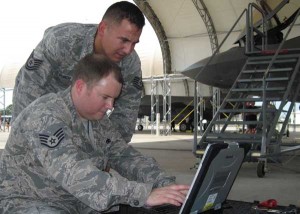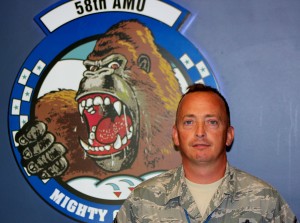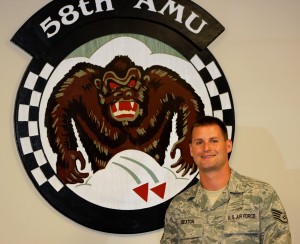2013-07-17 The F-35 is built around a new maintenance approach.
The computer-based system is designed to facility a global supply system with significant advantages for improvements in sortie generation rates and global supportability. But like any new system, the effort is a work in progress.
With the declaration of entry into service dates, the practioners in the F-35 system are working towards a deployable solution by 2015 (USMC), 2016 (USAF) and 2018 (USN).
The USAF criteria for IOC consists of standing up the first operational F-35A squadron equipped with between 12 and 24 aircraft and with enough train personnel “to conduct basic close air support (CAS), interdiction, and limited suppression and destruction of enemy air defense (SEAD/DEAD) operations in a contested environment.”
It can be expected that as the first decade of experience is gathered the maintenance system will become realized and its advantages leveraged.
It takes time.
But the advantages are clear in terms of global supportability and sustainability.

The theme of it takes time was underscored in an earlier discussion with logistics guru Lou Kratz, formerly of DOD and now with Lockheed Martin:
The F-35 is the first tactical aircraft system that from the beginning was directed to design the sustainment concurrent with the air vehicle to optimize operations. Because of that, the United States and our partner nations have invested roughly $2 billion over the last decade to develop, and establish what I’ll call a 21st century sustainment capability.
The challenge we have is that 21st century structure comes to advancing in technology and information systems that have to be developed and proven….
The support system – including the IT system which enables it – will mature over time…. I’m a logistician.
You’re talking to a logistician, and I can get myself all excited about how wonderful this logistics stuff is, but this was all done to achieve operations.
Not to make the logistics people feel better, it was done to meet operational requirements of coalition forces, rapid sortie generation rates, and delivery of either strike or intercept as required by the operational commanders and to do so at an affordable cost for the US forces as well as the partner nations.
These aren’t nice to haves; these are must-haves in term of the threat environment we see in the upcoming 15 years.
To turn the approach into reality is hard work.
During a recent visit to the 33rd Fighter Wing, we had a chance to talk with two of the USAF maintainers involved in shaping the reality for the first IOC USAF planes.
The first interview was with the 58th Crew Chief and the second was with one of his team.
Both emphasized that meeting the challenges was part of the excitement in shaping the deployment of the new aircraft.
The 58th Crew Chief Looks at the Challenges
In a visit to Eglin AFB in mid-June, we had a chance to talk with Senior Master Sargent Eric Wheeler, the Aircraft Maintenance Unit (AMU) lead production maintainer.
Throughout he emphasized the maintenance of the jet is a work in progress. As the software evolved for the combat systems, the software for maintaining the aircraft was evolving as well. The IOC aircraft will represent a core point for stabilizing the intersection of the two software streams to shape an operational squadron and its deployment capabilities.
“We have 12 aircraft currently and are doing the maintenance on these aircraft. These include the early aircraft as well as the production aircraft we are now receiving.”
The original plan was for Lockheed employees to manage the initial maintenance and train the trainers. But when the aircraft delivery moved to the right, the plan changed and the USAF was doing more of the up front maintenance work.

They still had oversight on the maintenance, but as far as the scheduling of the aircraft and the status, serviceability of the aircraft, that all ended up on the Air Force’s hands. Now, we’ve pretty much transitioned 90 percent Air Force. We have support from field service engineers here from between Lockheed, BAE and Northrop Grumman.”
The three new block 2 alpha jets had just arrived but until then the maintenance was being performed on 9 aircraft.
With these aircraft, “we have been supporting 6 sorties a day; 4 in the morning and 2 in the afternoon. Usually we had six aircraft because two are functioning as spares. So out of the nine, I had six aircraft on schedule every day.”
The crew chief underscored that working with a maturing system is a challenge but also exciting for his team as well.
“The computerized fault resolution system is not yet mature but that is an advantage. We have to learn ourselves hands on to troubleshoot the systems and it allows us to give feedback to the engineers as well about the systems.”
He saw the maintenance crew as part of the development process in effect.
“We constantly submit an action request saying this is what you should go after first if you see this problem. So every time we have a problem with an aircraft, and there’s nothing that’s steering us in that direction, we submit an action request saying this is what we had, this is what fixed it.”
The approach was described as one of “cautious execution.”
“If you’re not sure, you just take a step back and submit an AR (Action Report), and we talk to the engineers. We have daily interaction with engineers at Fort Worth on all the different systems. Truly, the experts that we have right here are the field service engineers from Lockheed, BAE and Northrop.”
SLD: So you are giving constant feedback about what you see are the problems as well as solutions or just issues with which you are concerned?
Wheeler: That is correct.
I think the hardest part is my team understanding all the different software loads and aircraft data loads of the aircraft, which makes it different from other aircraft.
A F-16 Maintainer Shaping the F-35 Approach
During a visit to the 33rd Fighter Wing in June 2013, we had a chance to talk with Staff Sgt. Adam Sexton. Sexton has been in the USAF since April 2006 and in his time in the USAF has been in Japan, Italy, Iraq and Afghanistan. He is a F-16 maintainer, and is enthusiastic about dealing with the challenges of maintaining a new jet, and putting in place the procedures and approaches.
If anything really came through during the interview was the young maintainer’s enthusiasm for being present at the creation of the maintenance regime for a new class of fighter jets.
As Sexton put it: “I had a choice. If I wanted to stay with F-16s or start with the F-35s, but once I heard that I could’ve had a chance to go to 35s, I wanted to start with the new program.

It was nice starting from the very bottom and watching them mature as they get older.”
The discussion with Sexton focused on the inherent advantages of a coalition of aircraft approach as well as to getting past the incompatibilities built into the F-16 fleet. With the various variants of the F-16, the practice is to fly in the support systems along with a squadron of aircraft, for the engines and various other systems vary among the aircraft.
“With the F-35, for example, in Japan, I would be able to work with the Japanese on maintaining the same aircraft and working from a common stockpile of parts and equipment. I can not do that now.”
He added: “Since we’ll all be working together as a joint unit, if they have problems, we can help them out. We will use the same supply system parts and everything. It’ll be easier to work together.”
Sexton talked about the challenges of dealing with the evolution of the ALIS software for maintenance. He pointed out that the ALIS system has gone from a 102 to a 103 variant, which is quite different, and somewhat like the challenge of moving from Windows 7 to 8. It is better but it is different.
“In the old systems you read a lot of gauges on the aircraft; with the F-35 you are working with computer readouts. It is a different experience and takes some getting used to.”
For our book on The F-35 Maintenance Revolution, go to the following:
https://www.sldinfo.com/defense-security-publications/
Update on 33rd Aircraft Maintenance Squadron Receiving Recognition
According to a press release (July 17, 2013) from the 33rd Fighter Wing:
The F-35 Joint Strike Fighter program continues to garner accolades, as the 33d Aircraft Maintenance Squadron won the 2012 Air Education and Training Command Maintenance Effectiveness Award for the past year.
The award is given to a maintenance unit for mission accomplishment, effective use of resources, innovative management practices and quality-of-life programs. The squadron was measured against other legacy fighter units.
The unit led the way by accomplishing a number of program firsts, such as executing the first operational F-35A mission and graduating the first F-35A non-test pilots. Flying wasn’t the only focus as personnel also benchmarked training syllabi, established maintenance practices and verified tasks used by all future F-35 maintainers.
The squadron performed these and multiple other tasks while exceeding flying and scheduling effectiveness standards, as well as garnering an “excellent” rating during the unit’s first compliance inspection.
This is a major command level award to the unit.

